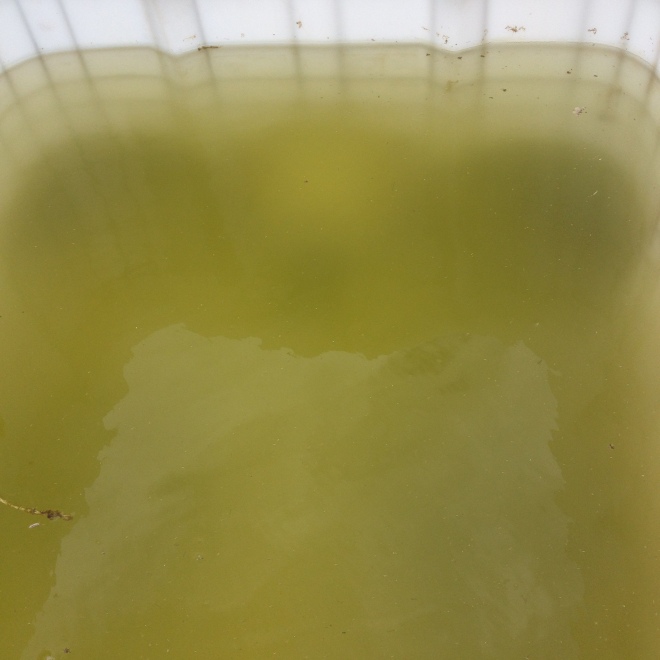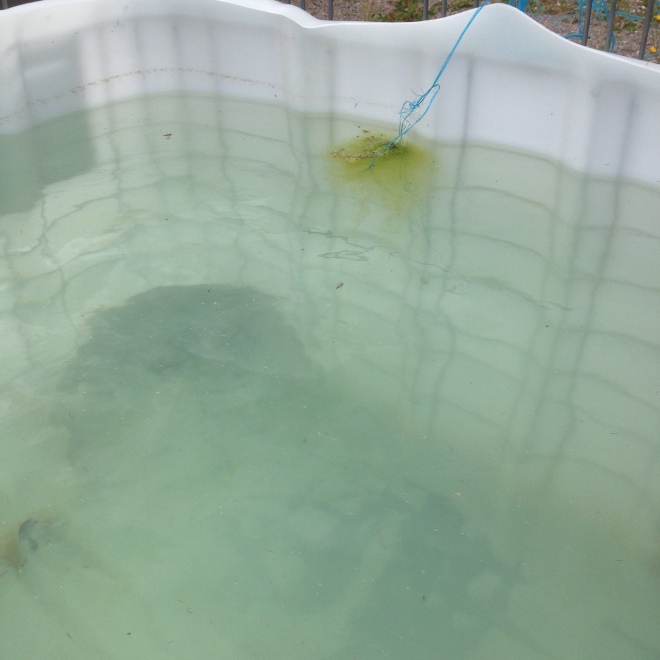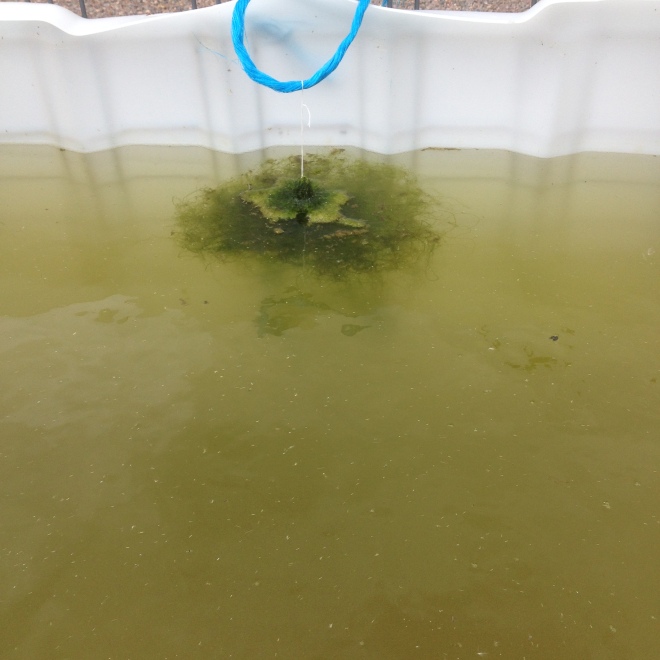For two weeks, the bachelor course “Environment of the Baltic Sea” from Stockholm University have been stationed at the Askö Laboratory for field studies. The course includes many relevant methods for new biologists. Among other things, the students have been fishing with survey gillnets, dug the mud of soft bottoms, and done meticulous inventories of vegetation and animal community in three shallow bays.

Enthusiastic students snorkle out to make an inventory of the flora in a Baltic Sea shallow bay.
Part of the course also focuses on how humans affect the Baltic Sea ecosystem. For an easy way to show how urine in the sea affects the growth of phytoplankton, i.e. eutrophication, the students were instructed to set up 4 pieces of plastic tanks of 1 m3 (1000 liters) and fill with seawater. One tank was used as control and nothing else was added to it. In the other three 3dl, 6 dl and 12 dl of urine was added in order to study the phytoplankton response to different nutrient levels.

0,3 permille urine and a week of sun clearly demonstrates how the phytoplankton thrive in response to nutrients.
This year I also put a piece of the filamentous alga Cladophora glomerata in the tanks. This algae grows just below the surface and thrives in nutrient-rich waters. When grown in high nutrients, it gets a darker green color. This is clearly seen in the most eutrophic tank with 1.2 liter of urine per 1,000 liters of water.

The control treatment has no added urine, and the Cladophora glomerata has a light green colour.

In the tank with the highest concentration (1,2 dl), the Cladophora glomerata has grown well and is dark green. The water is full of phytoplankton and does not exactly make one keen to take a bath.





















